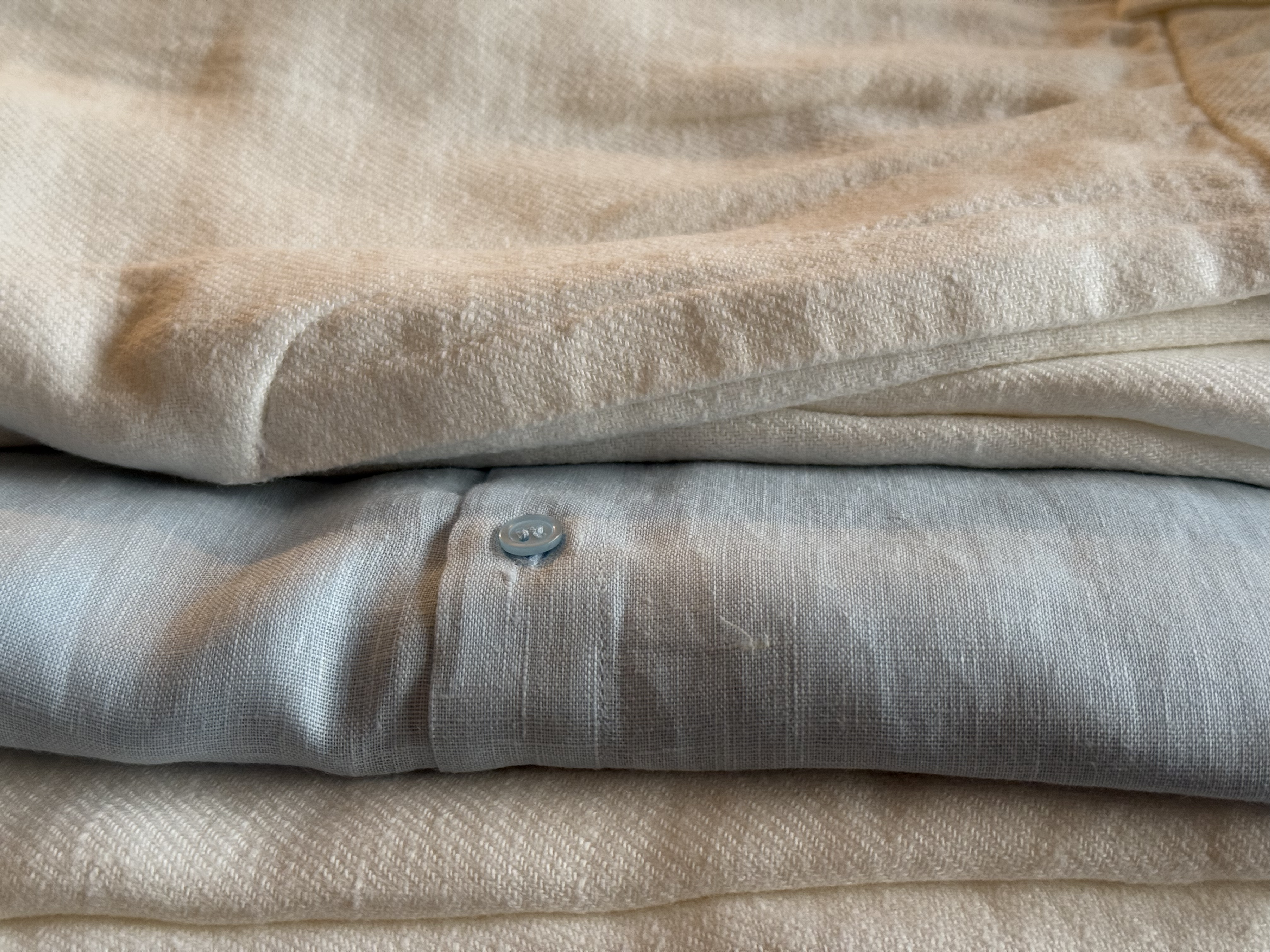How to take care of your linen clothes

Linen clothes are a smart choice for anyone looking for comfort, durability, and a touch of timeless style. They’re naturally breathable and moisture-wicking, making them perfect for warmer days, while also being eco-friendly and gentle on sensitive skin. Linen is a strong, long-lasting fabric that only gets better with wear, becoming softer and more relaxed over time. While it may need a bit more care, its versatility, natural texture, and sustainability make it a worthwhile investment for any wardrobe.
Taking care of linen clothes properly can help them last longer and maintain their natural beauty. Here are some key tips for keeping your linen garments in great shape:
1. Washing Linen Clothes
- Hand wash or gentle machine wash: Linen is a delicate fabric, so it’s often best to hand wash it to avoid excessive wear. However, if using a washing machine, opt for a gentle or delicate cycle with cold or lukewarm water (no hotter than 40°C/104°F).
- Mild detergent: Use a gentle, natural detergent without harsh chemicals or bleach. Linen is a natural fiber and can be damaged by strong chemicals. * Wash with similar colors: Linen can be prone to color bleeding, so always wash light and dark colors separately.
- Don’t overload the machine: Avoid overloading the washer, as this can cause excessive friction and result in more wrinkles.
2. Drying Linen
- Air dry: The best way to dry linen is to hang it up to air dry, either on a clothesline or a drying rack. Avoid direct sunlight for long periods, as it can cause fading.
- Tumble dry (optional): If you must use a dryer, set it to a low or delicate heat setting. Remove the clothes while they are still slightly damp to minimize shrinkage and wrinkles.
- Don’t wring or twist: After washing, gently press out excess water rather than twisting or wringing, which can distort the fibers.
3. Ironing Linen
- Iron while damp: Linen wrinkles easily, so it’s best to iron your clothes while they are still slightly damp or spritz them with water before ironing.
- High heat setting: Linen typically requires a high heat setting to remove wrinkles. Using a steam iron is especially helpful.
- Use a pressing cloth: If you’re concerned about damaging the fabric, place a thin cloth between the iron and the linen to protect it from direct heat.
4. Storing Linen Clothes
- Store in a cool, dry place: Linen should be stored in a well-ventilated, dry area to prevent mildew or mold.
- Avoid heavy folding: To minimize deep creases, fold linen garments gently and store them in a way that prevents excessive pressure on the fabric. Hanging linen garments is another good option, especially for items like shirts and dresses.
5. Dealing with Stains
- Act quickly: For spills or stains, blot the area with cool water immediately—don’t rub, as this can spread the stain.
- Spot treat: If necessary, apply a small amount of mild detergent to the stained area and gently rub it in. Rinse with cool water before washing.
- Avoid harsh chemicals: Stay away from harsh stain removers or bleach, as these can weaken the fibers and cause discoloration.
6. Avoiding Shrinkage
- Cold water and air drying: To prevent shrinkage, wash linen in cold water and avoid using high heat when drying.
- Pre-wash: Some linen items may shrink slightly after the first wash. If you're worried about shrinkage, pre-wash your linen before wearing it.
By following these simple steps, you can keep your linen clothes looking fresh, feeling soft, and lasting longer. Linen is a durable and versatile fabric, and with proper care, it will become more comfortable and attractive over time.
References
- How to wash linen from Laundress
- How to clean linen from Woolite
- Tags: linen



